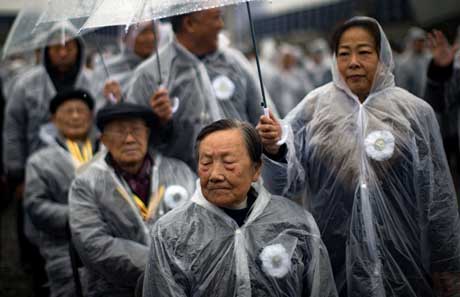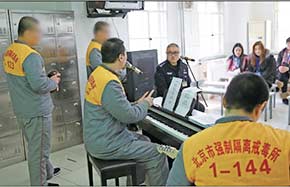Innovation sets new path for growth in China
BEIJING, Dec. 6 (Xinhua) -- It took years before optical scientist Shan Xiaonan decided to start his own business.
Shan had been working for two decades in Changchun Institute of Optics, Fine Mechanics and Physics in Jilin province, Northeast China, before setting up RaysLaser, a hi-tech company researching high-power lasers, last December.
In just three months, he received more than 500 orders worth 20 million yuan ($6.9 million).
"I always wanted to start my own business, but did not dare do so without policy support," Shan said.
Jilin recorded 6.9 percent GDP growth in the first three quarters of the year, the first time it exceeded the national average since 2014.
The economy regained signs of recovery this year due to its innovation-oriented development. In Jilin alone, the proportion of commercialized scientific research findings increased by 15.1 percentage points compared with 2010.
While China's economy is expected to follow an "L-shaped" path, meaning the downturn will bottom out but growth will not rebound to the double-digit rates of the past decade any time soon, the country is innovating to encourage hi-tech sectors to become new engines of growth.
To encourage more institutions to bring hi-tech achievements to the market, China revised its Law on Promoting the Transformation of Scientific and Technological Achievements last year.
The revision states that contributing scientists should retain at least half of the invention's commercial worth. Jilin further raised it to 70 percent.
"Researchers are greatly motivated [by the new revision]. We are confident about the future," Shan said.
Previously, researchers had to go through complex approval processes before they could put scientific advancements on the market. Those who did were only rewarded a 20 percent of total profits.
Northeast China, of which Jilin is a major part, relied on heavy and chemical industries, energy resources, raw materials and a large number of state-owned enterprises for decades before its economic growth pattern came to a dead end.
Its double digit GDP growth plummeted to almost the lowest in China as the country began cutting capacity in high-polluting industries, the region's major growth engine.
Forced to change, Jilin, home to more than 100 research institutions of municipal level and above, has turned to hi-tech manufacturing for solutions. It encourages science research units in hi-tech companies to partner with universities in product development.
"Researchers have more mature ideas when going into business, so they can create better business chances if they become entrepreneurs," said Yang Limin, who now leads a 3D-printing company after resigning from a state-owned automaker in 2010.
Yang's company is engaged in 3D development, manufacturing and services, especially for automobile and education sectors. His research team has included post-graduates from overseas.
His company is located in Changchun Beihu Science Park where 80 hi-tech startups have settled. To date 18 hi-tech company bases like Beihu have been founded in the province. More than 300 companies are established at these bases, most of which were started by scientists and researchers in universities and other institutions.
In mid-November, China issued guidelines to rejuvenate the northeast rust belt. The country will support the region to establish industrial investment funds, request it creates a three-year plan to cultivate emerging sectors, and offer fiscal support. Startups have also been encouraged to locate in the cities of Changchun and Harbin, where preferential investment and financial support is given.
In Jilin's neighboring Heilongjiang province, domestic investors have been encouraged to create nine hi-tech risk control funds totalling 5.35 billion yuan, offering capital support to hi-tech enterprises and projects.
At an industrial park in Jixi City, a machine makes a graphite catalytic cylinder every three seconds at Jixi Haoshi New Energy Material.
"The products, made to process diamonds, sell at up to 80,000 yuan per cylinder, 30 times greater than what the value of graphite would have been as a raw material," said Zhao Jianmin, general manager of the company.
High-end products in graphite, organic food and medicine are helping the city to reduce its traditional dependence on coal.
Benefiting from these innovative products, share of coal industry has dropped from 80 percent to about 50 percent, said Kang Zhiwen, Party chief of the city, adding that economic growth in the first half of the year in the city stayed at 4 percent, up 2.9 percentage points year on year.
Over the past two years, more than 2,900 hi-tech companies have been established in Heilongjiang, according to the provincial science and technology department. The province also allows university students to suspend their studies, taking a break for a maximum of eight years to start their own businesses.
Unlike the northeastern region that is striving to keep pace with the national level, southwestern Chongqing municipality has led the country's economic growth in 11 consecutive quarters with a growth rate of 10.7 percent as of September.
Tu Xingyong, deputy director with the municipal commission of economy and information technology, said the double-digit growth miracle lies in innovation of its key industries, IT and automobile manufacturing, as well as exploring emerging industries based on the country's import demands.
The municipality has selected 10 emerging industries, aimed at addressing domestic demand by substituting the imported products.
"Energy, for example, is China's second largest sector in import value. With abundant shale gas resources, Chongqing has already seen the bright future in exploitation," he said.





















